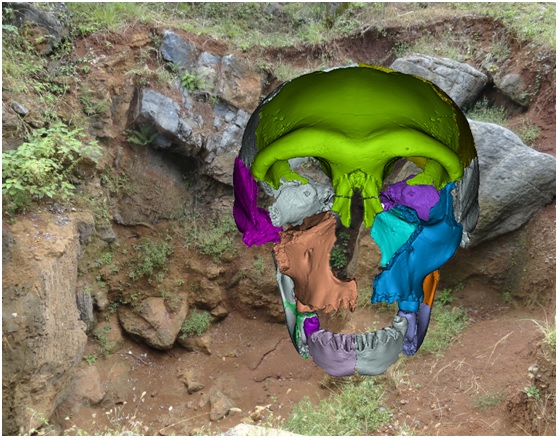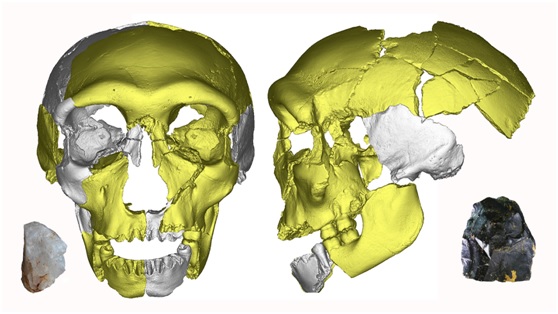Excavations in Middle Pleistocene cave deposits in southeastern China yielded a largely complete skull that not only exhibits morphological similarities to other East Asian Middle and Late Pleistocene archaic human remains, but also foreshadows later modern human forms. Fossil evidence for human evolution in East Asia during the Pleistocene is often fragmentary and scattered, complicating efforts to evaluate the pattern of archaic human evolution and modern human emergence in the region.
A research group from the Chinese Academy of Sciences and Washington University with their colleagues report the recent discovery of most of a skull and associated remains dating to around 300,000 years ago, in Hualong Cave (Hualongdong). The features of the Hualongdong fossils complement those of other East Asian remains in indicating a continuity of form through the Middle Pleistocene and into the Late Pleistocene. In particular, the skull features a low and wide braincase with a projecting brow but a less prominent midface, as well as an incipient chin. The teeth are simple in form, contrasting with other archaic East Asian fossils, and its third molars are either reduced in size or absent.
According to the authors, the remains both add to the expected variation of these Middle Pleistocene humans, recombining features present in other individuals from the same time period, and foreshadow developments in modern humans, providing evidence for regional continuity.
This work were published on April 30 in Proceedings of the National Academy of Sciences (PNAS).

Fig.1 The Hualongdong Middle Pleistocene human skull and the collapsed cave site, with the fossil-bearing breccia in beige around the limestone blocks. Image: WU Xiu-Jie and TRINKAUS Erik.

Fig.2 The virtual reconstruction of the Hualongdong 6 human skull, with mirror-imaged portions in gray, plus two of the few stone tools from the site. Image: WU Xiu-Jie.
 © 2015 Institute of Earth Environment,CAS
© 2015 Institute of Earth Environment,CAS Address:No. 97 Yanxiang Road, Xi'an 710061, Shaanxi, China

 Location :
Location :